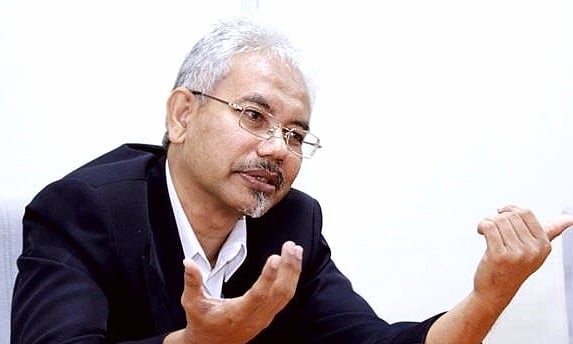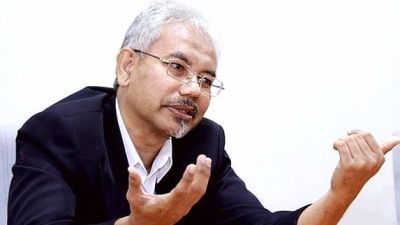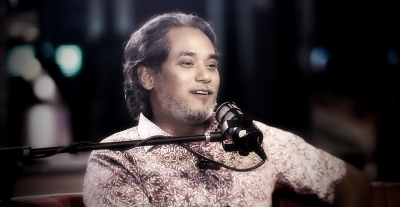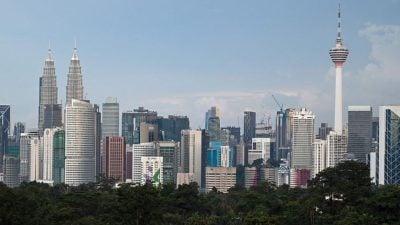
The knee-jerk reactions of Malay politicians on the issue of Muslims visiting other houses of worship has set back Malaysia 60 years.
It is a great pity that a Selangor lawmaker prohibited the visiting of houses of worship by Muslims as a reaction to an ignorant comment by a narrow-minded opposition MP.
In this article, I will explain to Malaysians my involvement in the study of houses of worship other than masjids.
My involvement in visiting other houses of worship, and in this case churches, began in the United States. There, I was the vice president of the Muslim association of the University of Milwaukee.
I was invited as a panelist in a forum for Christians to know more about Islam. I went to the church in Milwaukee and sat in the forum answering questions for two hours.
During my time there, I also represented UWM MSA or Muslim Students Association to be a delegate to a Black Muslim Church.
When I was reading for my PhD, I lived in Clovenstone Park in Wester Hailes, Edinburgh. There I was invited by a Christian community to have tea and biscuits at a nearby church. The purpose was to forge good community relationship and there were a few Pakistanis there, too.
It was at this church that I saw my first baptism pool because as an architecture academic, I need to teach Malays about how building works fit rituals, functions and symbols.
When I began my career as an academic at Universiti Teknologi Malaysia, I was involved in the subject called “Measure Drawing” or Lukisan Terukur.
The academic purpose of the subject is to record as many heritage buildings of all races, of all faiths and cultures as possible.
The way the subject was conducted was that a group of five to ten students of mixed race would be sent for one month to a selected heritage building. There the students would measure the building, draw the plans and elevations from the measurement and interview the people who knew about these buildings.
The main pedagogy or teaching purpose was to get the students to experience the culture of the users and the functions of the spaces as well as the meaning of symbols and ornaments.
The students were also asked to record the structural and technological aspects of the building. The lecturer who supervised the students would make a trip personally to oversee the students’ work.
At the end of the semester, a written report in hard bind and a set of drawings would be produced to the level of an archaeological preciseness.
Perhaps, the whole School of Architecture in Malaysia should relocate to Sabah and Sarawak because the Muslims there are more confident and trusting of other faiths.
UTM is presently the repository of the largest collection of heritage buildings in Malaysia and one of the largest in Asia.
During my time there, aside from supervising the measurement and writing of traditional Malay houses and palaces, I also supervised the measuring and documentation of several churches, temples and kongsi houses.
I have published two books Masjid, Kuil dan Gereja and Mosques, Temples and Churches with Dewan Bahasa dan Pustaka.
The students doing the Measured Drawing were Year Two students. As for the final Sixth Year Design Thesis students, I had supervised the design of churches, temples, columbaria and ecumenical centers. All my final year students with these projects score “A” from a panel of four academics.
Presently at UCSI University, I have completed the study of five churches, five mosques, two gurdwaras and two Buddhist temples under my research area of Social Inclusion of Houses of Worship in Malaysia with my Research Methods Masters students, three of whom are Muslims from other countries.
Several of the students’ work have been published in journals and read at conferences.
The aim of the research was to gauge how “friendly” houses of worship are to other communities.
My long term hope is to inspire designers and community leaders to create common spaces where everyone will never be a stranger in visiting these houses of worship.
I have also been invited to give talks at Buddhist and Christian communities that occur in their houses of worship.
Some Malay groups have targeted my activities with a narrow understanding of mistrust between religious faiths.
I have also been invited to celebrate Christmas at various churches a few days before the actual date. Some of these events occurred at hotels and some in churches. There were many other Malays present as a show of Malaysian unity.
To date, I have lectured to thousands of non-Muslims about Islam and the socio-political issues of this country.
I was awarded the Civil Society Award by the Kuala Lumpur and Selangor Chinese Assembly Hall and also a National Unity Award by Educoop, which is a group of private universities in Malaysia.
Now, with the pronouncement of disallowing Muslims to visit other religious houses of worship and experience some of their activities, it would be extremely difficult for me to give a full architectural education with YouTube videos or Powerpoint slides.
Architecture education requires an immersive aspect like the UTM Measured Drawing experience.
It will be expensive to haul students to Singapore to visit houses of worship or to fly them to Sarawak and Sabah.
Perhaps, the whole School of Architecture in Malaysia should relocate to Sabah and Sarawak because the Muslims there are more confident and trusting of other faiths.
(Prof Dr. Mohd Tajuddin Mohd Rasdi is Professor of Architecture at a local university and his writing reflects his own personal opinion entirely.)
ADVERTISEMENT
ADVERTISEMENT





































